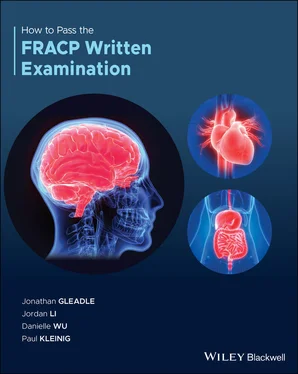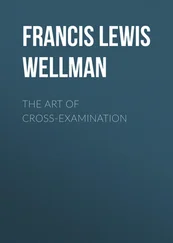
Carey M, Whelton PK. Prevention, detection, evaluation and management of high blood pressure in adults: Synopsis of the 2017 American College of Cardiology/American Heart Association hypertension guideline. Ann Intern Med. 2018;168(5):351–8.
https://www.acc.org/˜/media/Non-Clinical/Files-PDFs-Excel-MS-Word-etc/Guidelines/2017/Guidelines_Made_Simple_2017_HBP.pdf
27. Answer: C
Restrictive cardiomyopathy (RCM) is a heterogeneous group of diseases with variable pathogenesis, clinical features, diagnostic criteria, management strategies and prognosis. It is the least common of the cardiomyopathies and is often underdiagnosed.
In patients with RCM, a restrictive ventricular filling pattern is noted secondary to ventricular stiffness. Biventricular size and normal or near‐normal ventricular systolic function are usual in the early stages of the disease. Depending on the ventricle involved, patients may have signs of right or left heart failure, conduction disturbance or arrhythmias. Diagnosis of RCM is based on echocardiogram, cardiac MRI and in some cases endomyocardial biopsy.
RCM is categorised as infiltrative (amyloidosis, sarcoidosis, primary hyperoxaluria), storage disease (Fabry disease, Gaucher disease, hereditary haemochromatosis, glycogen storage disease, mucopolysaccharidosis type I and type II, Niemann‐Pick disease), noninfiltrative (idiopathic, diabetic, scleroderma, myofibrillar myopathies, pseuxanthoma elasticum, sarcomeric protein disorders, Werner's syndrome), and endomyocardial (carcinoid heart disease, endomyocardial fibrosis including idiopathic, hypereosinophilic syndrome, chronic eosinophilic leukaemia, drug‐induced secondary to serotonin, methysergide, ergotamine, mercurial agents, busulfan, anthracyclines), endocardial fibroelastosis, metastatic cancer, and radiation, etc.
Left ventricular outflow tract obstruction is often seen in patients with subaortic stenosis, bicuspid aortic valve, supravalvular aortic stenosis, coarctation of the aorta, and hypertrophic cardiomyopathy. Option C is often seen in patients with sarcoidosis and RCM. Option D is seen in patients with dilated cardiomyopathy, which is the most common cause of cardiomyopathy.
Treatment should be of the underlying cause(s) of RCM if possible. Diuretics should be used with caution for patients with fluid overload, as some patients with RCM rely on high filling pressure to maintain cardiac output. Excessive diuresis may cause reduced cardiac tissue perfusion. β‐blockers and calcium channel blockers could be used to manage arrhythmias or increase filling time. However, careful monitoring of the response is required as some patients may be intolerant. Angiotensin‐converting enzyme (ACE) inhibitors and angiotensin receptor blockers should be considered. However, currently there is no evidence that these agents may be beneficial, and they may not be well tolerated by patients with RCM. Anticoagulation is required in patients with atrial fibrillation, mural thrombus, or evidence of systemic embolisation to prevent strokes. Left ventricular assist device may be beneficial in patients with advanced heart failure as a definitive therapy or as a bridge to cardiac transplant.

Muchtar E, Blauwet L, Gertz M. Restrictive Cardiomyopathy: Genetics, Pathogenesis, Clinical Manifestations, Diagnosis, and Therapy. Circulation Research. 2017;121(7):819–837.
https://www.ncbi.nlm.nih.gov/pubmed/28912185
28. Answer: D
Acute rheumatic fever (ARF) and rheumatic heart disease (RHD) remain a significant cause of cardiovascular morbidity and mortality worldwide. In Australia, ARF and RHD disproportionately affect the ATSI population, with up to ×10 higher incidence, ×8 higher ARF hospitalisation rates, and ×20 higher mortality. The highest rates of ARF are in children aged 5–14 years old, and highest rates of RHD in adults aged 35–39, with an all‐age RHD incidence up to 2% in ATSI populations in the Northern Territory.
All patients with suspected ARF should be hospitalised to enable appropriate diagnostic investigations including echocardiogram. In high risk groups there should be a lower threshold for diagnosis as listed below and high‐risk groups are populations with an incidence of ARF >30/100 000 per year in 5–14 years old or incidence of RHD >2/1000 in all age groups.
ARF diagnosis requires evidence of a preceding group A streptococcus infection, and two major manifestations or one major manifestation and two minor manifestations listed below in low risk populations:
Major manifestations:Carditis (including subclinical evidence of rheumatic valve disease on echocardiograms)Polyarthritis or aseptic monoarthritis or polyarthralgiaChoreaSubcutaneous nodulesErythema marginatum.
Minor manifestations:FeverPolyarthralgia or aseptic monoarthritisESR ≥30 mm/hr or CRP ≥30 mg/LProlonged PR interval on ECG.
Treatment of ARF is benzathine penicillin G every four week, or every three week for high risk patients, for a minimum of 10 years after the last episode of ARF, or until aged 21 if no RHD or 35–40 if moderate–severe RHD.

ARF RHD Guideline [Internet]. Rheumatic Heart Disease Australia. 2019 [cited 19 August 2019]. Available from: https://www.rhdaustralia.org.au/arf‐rhd‐guideline
29. Answer: D
This patient's presentation and ECG changes are consistent with inferior and right ventricular (RV) myocardial infarction (MI). RV ischaemia complicates 30% to 50% of inferior MIs. Isolated RV myocardial infarction (RVMI) is rare. The coronary artery involved is usually an occluded right coronary artery (RCA). The proximal segment of the RCA supplies the sinoatrial (SA) node and the right atrial wall; the middle segment supplies the lateral and inferior right ventricle (RV); and the posterior portion of the left ventricle, the inferior septum, inferior left ventricular wall and atrioventricular (AV) node are perfused by the distal segment of the RCA. A few patients (10%) may have a right ventricle that is supplied by the circumflex artery.
Although the RVMI often shows good long‐term recovery, in the short term RVMI has a worse prognosis to uncomplicated inferior MI, with haemodynamic and electrophysiologic complications increasing in‐hospital morbidity and mortality. Acute RV shock has an equally high mortality to left ventricular (LV) shock.
Clinically, the triad of hypotension, elevated jugular venous pressure (JVP), and clear lung fields should raise the possibility of RVMI in patients with acute inferior MI. The classic 12 lead ECG provides information on the LV, but limited information on the electrical activity of the RV. Only lead V1 provides a partial view of the RV free wall. Right precordial leads are obtained by placing the precordial electrodes over the right chest in positions mirroring their usual arrangement. The presence of acute ST segment elevation, Q waves or both in the right precordial leads (V3R to V6R), is highly reliable in the diagnosis of RVMI. ST segment elevation 0.1 mV in the right precordial leads, especially V4R, is observed in 60–90% of patients with acute RVMI. ST elevation from the RV free wall may also be detected by ST elevation in lead III being more than that in lead II or by reciprocal ST depression in leads I and aVL. Echocardiogram should be performed in patient with or suspected RVMI. It may show RV dysfunction. Additional features of RV involvement include paradoxical septal motion due to increased RV end diastolic pressure, tricuspid regurgitation, and increased right heart pressure.
Читать дальше















